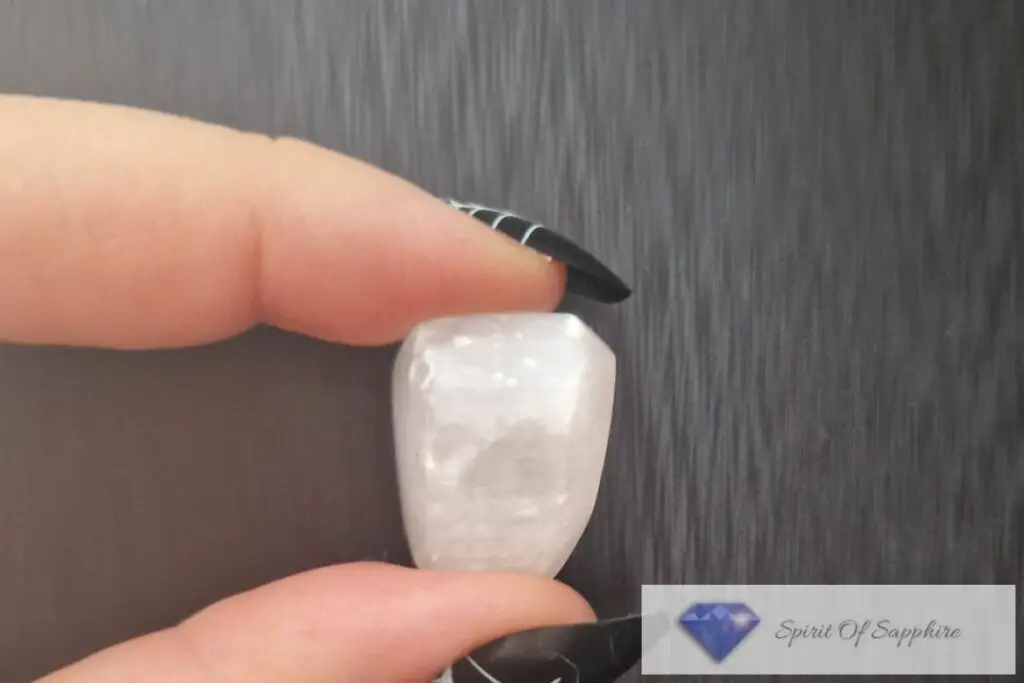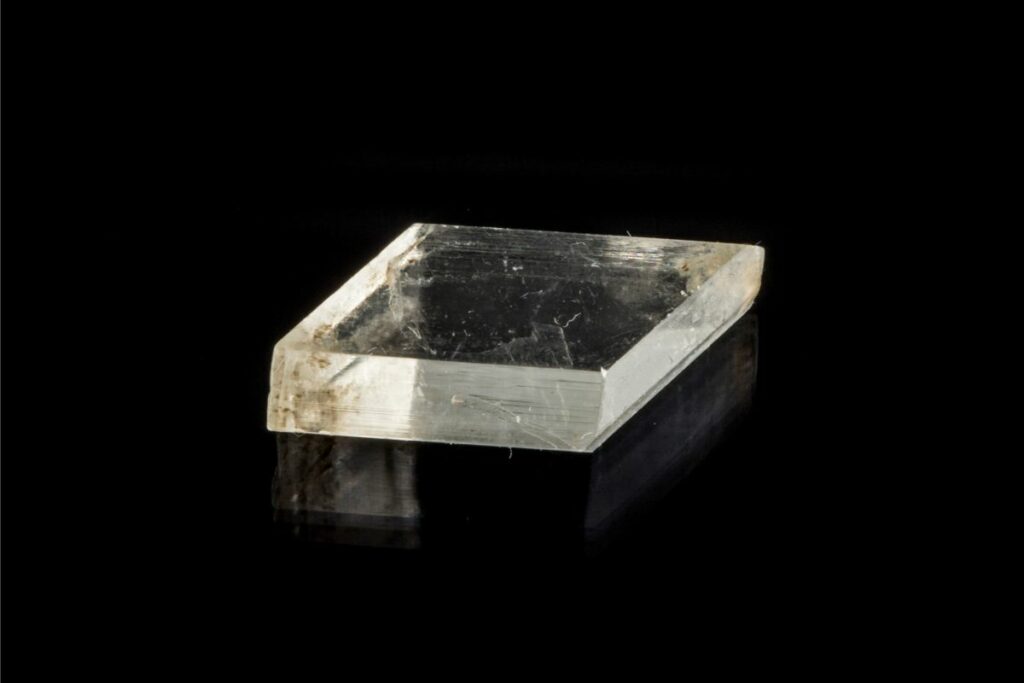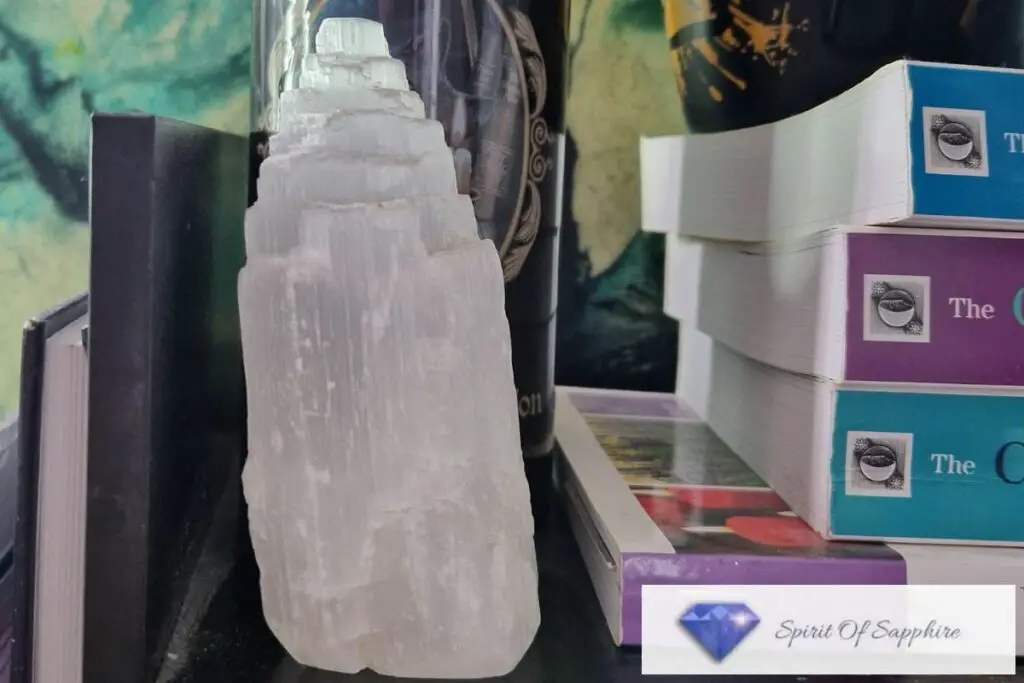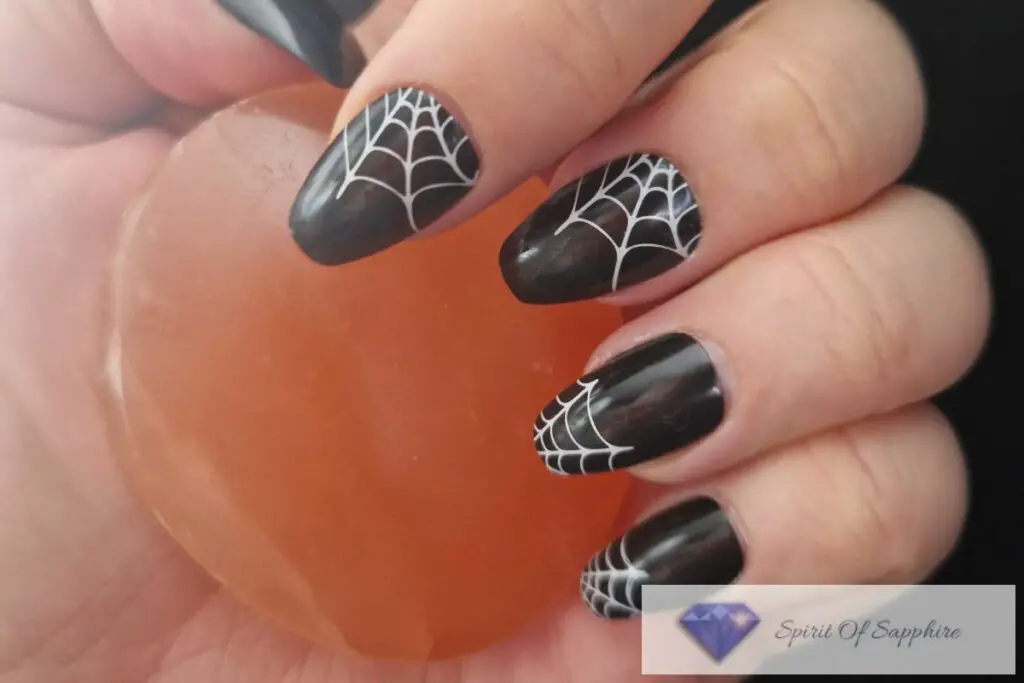The vast world of gemstones and crystals boasts an impressive array of minerals, each with unique aesthetic characteristics and attributed metaphysical properties.
Amid this impressive array, Selenite and Satin Spar stand out, captivating enthusiasts with their similar appearance and intriguing features.

Often mistaken for each other – even by crystal healers – these two minerals carry distinct qualities that set them apart while sharing the same broad family of gypsum.
I’ve even seen people describing this as one crystal, with two names, which isn’t true either.
In this article, I will explore these two fascinating crystals, their similarities, and differences, and how to distinguish between them effectively.
Understanding Selenite
Selenite, a crystal form of gypsum, owes its name to the Greek goddess of the moon, Selene, due to its moon-like translucent glow. It is often white, clear, or has a pearl-like luster, which adds to its celestial allure.
The formations of Selenite range from massive and granular to crystalline habit, and can be found in columnar and tubular shapes.
It has a hardness rating of 2 on the Mohs scale, indicating its delicate nature and propensity for scratching.
Selenite is revered for its purported ability to instill peace and serenity. It’s often used in meditation for spiritual growth and is believed to activate the crown chakra, facilitating a connection with higher consciousness.
Its soothing energy is said to promote purity and honesty, making it a popular choice for energy cleansing and space purification.

Understanding Satin Spar
Satin Spar, also a form of gypsum, is often confused with Selenite due to the similar visual characteristics and the same base mineral. It typically displays a silky, fibrous appearance and has a pearly, satin-like sheen that gives it its name.
Satin Spar is generally white or contains only a hint of color. In contrast to the typically clear Selenite, Satin Spar is translucent to opaque. Its growth habit leans toward a fibrous, elongated crystal structure, and it has a 2-2.5 rating on the Mohs scale.
In metaphysical practices, Satin Spar carries many of the same properties as Selenite. It is associated with the crown chakra and said to promote insight, awareness, and spiritual growth.
However, it also bears a unique link to the solar plexus chakra, which according to metaphysical beliefs, helps in fostering self-confidence and personal power.
I often use my Satin Spar for cleansing tarot cards and other crystals. I always take it with me on ghost hunts too – just in case.

Similarities Between Selenite And Satin Spar
As both Satin Spar and Selenite fall under the gypsum category, they share several similarities.
They are nearly identical in their chemical composition and physical properties, including their softness and sensitivity to water. Both crystals also possess a vitreous to silky luster and have a similar, soothing white hue.
Metaphysically, both Selenite and Satin Spar are hailed for their cleansing and purifying properties. Both are believed to be capable of clearing negative energies and are associated with spiritual growth, higher consciousness, and intuition. They are often used in the same capacity within spiritual and healing practices.
Differences Between Selenite And Satin Spar
Despite their similarities, Selenite and Satin Spar have noteworthy differences. Appearance-wise, while Selenite is often clear or translucent with a glassy or pearly luster, Satin Spar, by contrast, tends to be fibrous and displays a characteristic silky sheen.
Another significant difference lies in their growth patterns. Selenite usually forms in evaporative clay beds and hot springs as clear, well-formed crystals or as masses without any crystal faces. On the other hand, Satin Spar has an elongated fibrous crystal habit, often seen in the form of large, spear-like points.
In terms of metaphysical properties, Selenite is predominantly associated with the crown chakra and spiritual connection, while Satin Spar connects not only to the crown chakra but also to the solar plexus chakra, fostering self-confidence and inner strength alongside spiritual enlightenment.

How To Distinguish Between Selenite And Satin Spar
Distinguishing between Selenite and Satin Spar requires a keen eye and an understanding of their unique characteristics.
To differentiate, observe the luster and the crystal formation closely. Selenite’s transparency or translucency and its glassy or pearly luster can help differentiate it from the silky, fibrous, and generally opaque Satin Spar.
Additionally, a consideration of their typical formations can be beneficial. Satin Spar’s fibrous, elongated crystals contrast the clear, well-formed crystals or formless masses of Selenite.
Did you know, White Calcite can also be confused with Satin Spar. It shares a similar name too – Icelandic Spar!
Selenite Vs. Satin Spar: Buying Tips
I’ve visited my fair share of crystal shops and gem shows and, in the vast majority of cases, these sister crystals are mis-labelled.
Many sellers will have what is labelled as Selenite on offer, but in reality, it’s more likely to be Satin Spar.
Selenite, although similar, is softer than Satin Spar so it’s harder to shape. Satin Spar, on the other hand, can be purchased in various shapes and sizes.
I’ve got Satin Spar in wand, tower and palmstone formations in my collection. I even have a gorgeous Orange Satin Spar palmstone, which I love!
So if you’ve purchased Selenite at any point, chances are it’s actually Satin Spar as Selenite is far rarer.
In terms of usage though, it doesn’t really matter. As I’ve explained, they both have almost identical uses.
Final Thoughts
Despite their apparent similarities and frequent confusion, Selenite and Satin Spar are distinct in their own rights, offering unique aesthetic features and metaphysical properties.
Understanding these differences aids not only in their correct identification but also in their application within healing and spiritual practices.
Just as a gemstone collector celebrates the diverse beauty of the mineral kingdom, it is essential to honor the uniqueness of each crystal, even within the same mineral family.
And remember, if you think you have Selenite at home, it’s probably Satin Spar.
- Pegasus Symbolism: Understanding The Spiritual Meaning And Dream Meaning Of Pegasus - November 5, 2023
- 50 Beautiful Moonstone Affirmations To Try - November 5, 2023
- The 6 Best Samhain Crystals To Work With This Spooky Season - October 23, 2023






